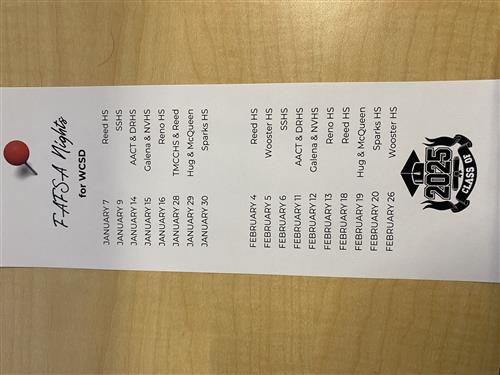- High Schools
- Financial Aid (FAFSA)
Career Center
Page Navigation
-


The first step to start your application is creating a FSA ID
What’s a FSA ID and Why Do I Need One?
The FSA ID, which replaced the Federal Student Aid PIN in May 2015, is the username and password you use when you visit certain U.S. Department of Education websites. When you type in your FSA ID at these sites, you are saying either “Yes, it’s really me” or “Please accept my FSA ID as my signature on this online form.”
How do I get an FSA ID?
Visit FSA ID to learn about and create an FSA ID.
Here’s what you need to get your FSA ID:
- Your Social Security number (you must have an SSN to get an FSA ID)
- Your full name (must match your Social Security card)
- Your date of birth
Although you’re not required to provide your e-mail address when you set up your FSA ID, it’ll make retrieving your username and password easier if you forget them. Just make sure you don’t use the same e-mail address as someone else (your parent, for instance). Each e-mail address can be associated with only one FSA ID.
Once you created your FSA ID your ready to start your application process FAFSA Application
What kinds of federal grants are available?
The U.S. Department of Education (ED) offers a variety of federal grants to students attending four-year colleges or universities, community colleges, and career schools. We’ve given each of our grants its own page:
- Federal Pell Grants
- Federal Supplemental Educational Opportunity Grants (FSEOG)
- Teacher Education Assistance for College and Higher Education (TEACH) Grants
- Iraq and Afghanistan Service Grants
Grants and scholarships are often called “gift aid” because they are free money—financial aid that doesn’t have to be repaid. Grants are often need-based, while scholarships are usually merit-based.
Loans
If you apply for financial aid, you may be offered loans as part of your school’s financial aid offer. A loan is money you borrow and must pay back with interest.
If you decide to take out a loan, make sure you understand who is making the loan and the terms and conditions of the loan. Student loans can come from the federal government or from private sources such as a bank or financial institution. Loans made by the federal government, called federal student loans, usually offer borrowers lower interest rates and have more flexible repayment options than loans from banks or other private sources.

